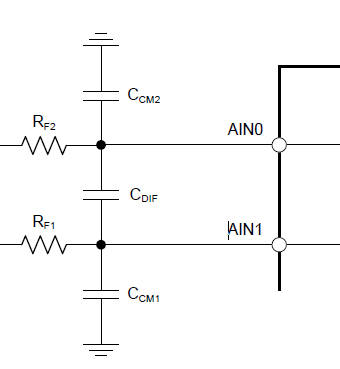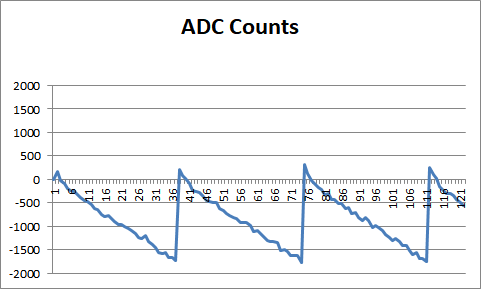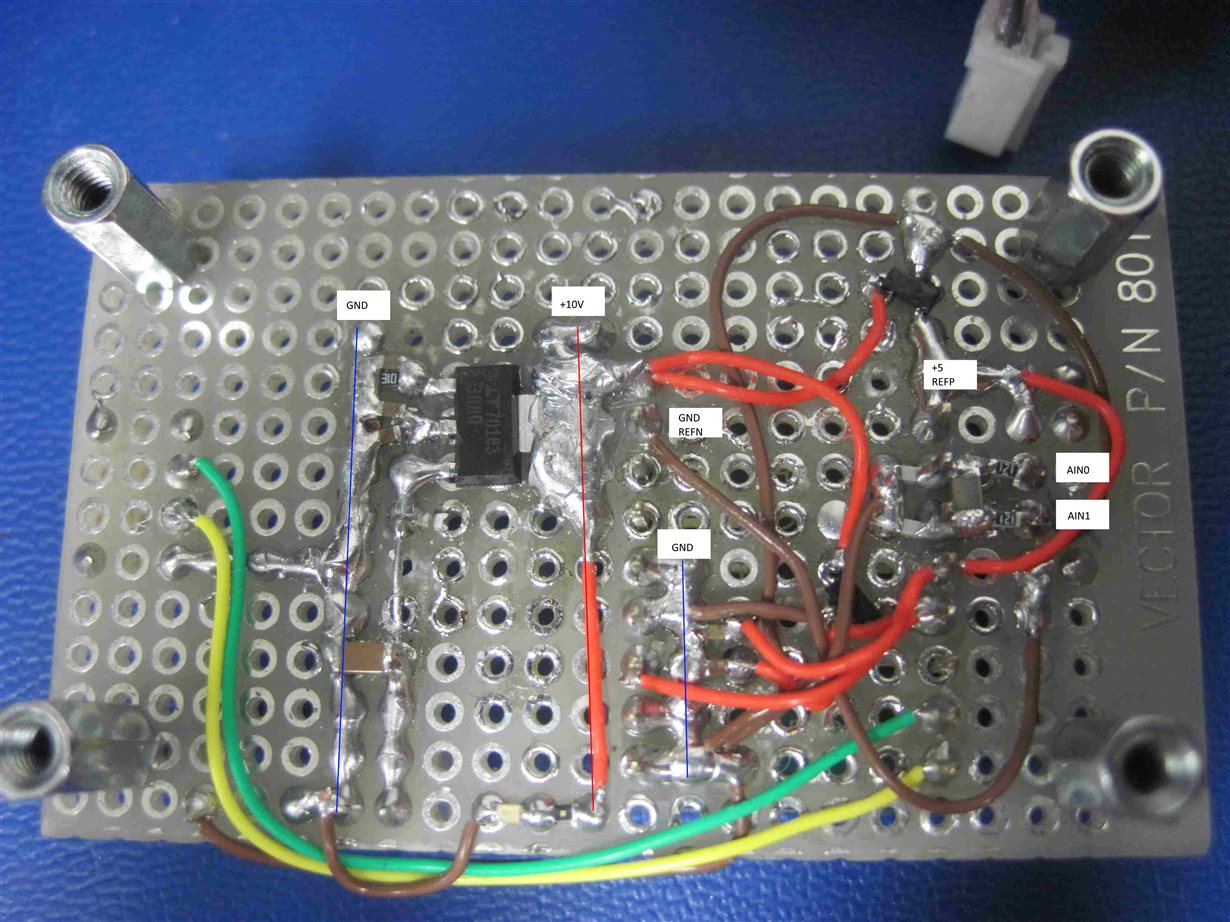Hello,
I am prototyping on perfboard with this ADC, and am experiencing a ~2Hz sawtooth noise in my data. (Plot below)
With the input pins shorted at the ADC, the noise goes away.
With an RC filter at the input, and shorted on the far side of the Rf1/Rf2, the noise appears.
Reducing the series resistors by one order of magnitude reduces the noise proportionally.
This leads me to suspect the input pins are sourcing/sinking more current than expected.
If instead this noise were aliased high-frequency content (2Hz from Fmod at 512kHz) I would have expected increasing the RC filter cutoff frequency from 900Hz to 9kHz would have increased the noise, rather than decreasing it - so I don't think it's this. I'm not aware of other possibilities.
DVdd=3V3
AVdd=5.000V
PGA: Enabled. Gain=128
Refp/n: AVdd
Input: AIN0/AIN1
Therefore input full scale = ±39mV
DRDY: Floating
/RESET: DVdd
RC filter: Similar to recommended on page 44 of datasheet:
Rf1=Rf2=1k Cdif=0.1uF Ccm1=Ccm2=1nf
Filter caps C0G
Bypass caps X7R 0.1uF on DVdd and AVdd.
Output rate: 90Hz
Turbo mode enabled
Continuous sampling enabled
Sawtooth noise: 1900 counts, or 9uV pk-pk at AIN0/AIN1
Apparent differential input current = 9uV / 1k = 9nA.
Datasheet: says input current is ±1nA on pg.5 (since PGA enabled with Gain=128)
I tried measuring the actual noise signal, but my 6 digit bench multimeter is a little too noisy down at this low voltage, so I can't verify the voltage at the input pins.




